Is Home Neurofeedback as Effective?
Wondering if home neurofeedback is as effective as in-office sessions? Learn more about the benefits and limitations in this blog post.
Read about the different systems of neurofeedback training and why the NeurOptimal® automated equipment is the top choice for home use and for families.
Once people understand that brain training is as important and beneficial as physical training the rest of the body, it can be hard to navigate the options. Neurofeedback is a great way to help support mental and emotional fitness, but it can be hard to understand all the options.
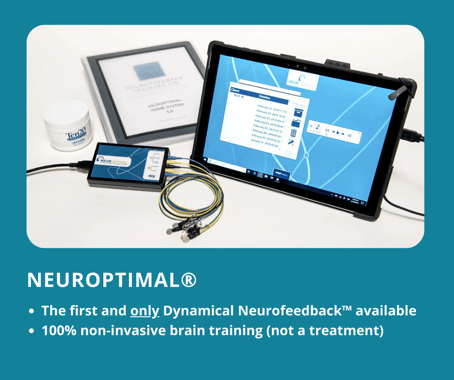 What is the best neurofeedback technology?
What is the best neurofeedback technology?NeurOptimal® neurofeedback is the only fully automated system that can be safely used at home. This means the system can be rented or purchased, and then used whenever you'd like, in the comfort of your own home. Because NeurOptimal® is fully-automated and easy to use, you aren't limited to a trainer's schedule. This makes it easy for you and your family to use before bed, on the weekends, or whenever you have time!
Below, we discuss how to use the neurofeedback device at home, how much it costs, and a Q&A answered by our expert Colorado Neurofeedback Rental Manager Kim.
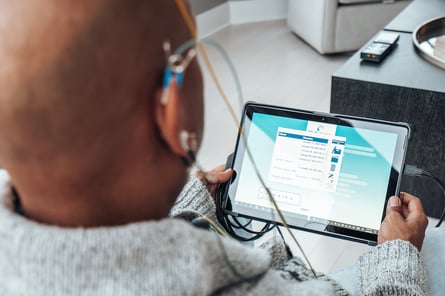 Yes. NeurOptimal® Personal System is a personal neurofeedback device, and it uses the same technology as its professional version. Most neurofeedback technologies are not designed for personal use at home. BrainPaint has a home-use device but it requires a trainer to oversee the training remotely. This means that although the device is technically in the home, training sessions are still limited to trainer availability.
Yes. NeurOptimal® Personal System is a personal neurofeedback device, and it uses the same technology as its professional version. Most neurofeedback technologies are not designed for personal use at home. BrainPaint has a home-use device but it requires a trainer to oversee the training remotely. This means that although the device is technically in the home, training sessions are still limited to trainer availability.
The majority of brain training devices are first generation neurofeedback systems, which require an expert trainer to manually set protocols and give the correct feedback to the brain in order for the trainee to experience neurofeedback benefits. These systems are used in an office setting and are not appropriate for home use. The second generation of neurofeedback has built-in software that communicates with the brain using dynamical, nonlinear mathematics; this system can be fully automated and is appropriate for both office and home use.
Let's use the analogy of automobile technology to understand the history of neurofeedback: the first generation of cars had a manual crank starter, then we moved to a key and now we press a button to start the car. The latest technological leap is self-driving cars. In much the same way, neurofeedback technology advances as computer power increases. Over the decades, it has made leaps in how it operates and who can run sessions. Most recently, it has made the leap to automation.
/Val_Headshot_founder-of-neuroptimal-Dr-Valdeane%20Brown.jpg?width=300&name=Val_Headshot_founder-of-neuroptimal-Dr-Valdeane%20Brown.jpg) Back in the early 1970s, the inventor of the NeurOptimal® neurofeedback system, Dr. Valdeane Brown, was working with existing computing technology to set and monitor protocols during brain training sessions. He could see a future where he would not need to manually set protocols because there would be enough data from successful training sessions, as well as computing power fast enough to match brain processing speeds.
Back in the early 1970s, the inventor of the NeurOptimal® neurofeedback system, Dr. Valdeane Brown, was working with existing computing technology to set and monitor protocols during brain training sessions. He could see a future where he would not need to manually set protocols because there would be enough data from successful training sessions, as well as computing power fast enough to match brain processing speeds.
Until recently, the brain processed information much faster than any computer could. Dr. Brown saw that there would be a time in the coming decades where neurofeedback could be personal device and would not require an expert trainer to monitor protocols. The computers would be fast enough and the software would be sophisticated enough to speak directly to the brain and provide the feedback essential to optimize its functioning.
That time came in 2011, when AutoNav was introduced to the NeurOptimal® system. Now, it is truly a home neurofeedback device and can be used safely and effectively by individual consumers. In 2018, the FDA designated NeurOptimal® a General Wellness Device, so that it could be rented or purchased as a personal system to use at home.
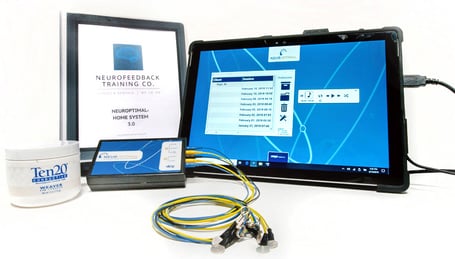 Why We Chose NeurOptimal
Why We Chose NeurOptimalWhen we were testing different systems for our neurofeedback therapy centers, we chose the NeurOptimal® neurofeedback device because the company offered a personal, home-use system with the same technological quality as their professional-grade neurofeedback equipment. This provides our customers with the option of office sessions or a home rental or purchase. Renting a home kit saves approximately 50% over in-office sessions, and purchasing saves up to 80%!
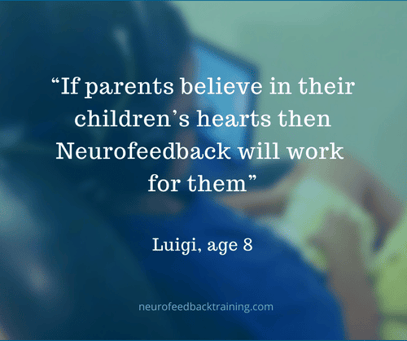 Our neurofeedback rental package helps people with sleep management, performance anxiety, get better focus for school and work performance and stress management. Here are a few reviews from our renters:
Our neurofeedback rental package helps people with sleep management, performance anxiety, get better focus for school and work performance and stress management. Here are a few reviews from our renters:
Amazing experience! I felt more grounded, confident and my clarity greatly improved.
– Wendy, Northern California. Google Review
Neurofeedback is a great way to improve performance and stay focused. Unit arrived on time and the team at Neurofeedback made it easy to rent a unit and get started.
– Andrew, Los Angeles. Google Review
l believe NeurOptimal has helped me recover from a really bad place mentally. I was to the point where I could not function in life because of my severe worry and fear. I am now able to function again and work more, although I still feel I have more room for improvement. It is also helping my husband manage his stress and sleep. Renting is a great option if you do not have a provider near by or if you want to get alot of sessions in a short amount of time.
– Danielle, Texas. Google Review
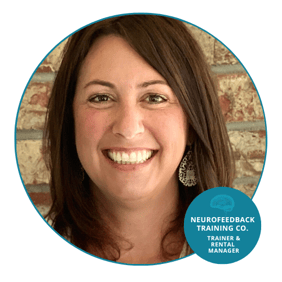
To help you explore whether a home neurofeedback kit is right for you, we asked Denver Neurofeedback Training Co rental manager and neurofeedback coach, Kim Planansky, who has managed hundreds of neurofeedback customers, to give us her most frequently asked questions about renting. People ask everything from how NeurOptimal® works to how many neurofeedback sessions are recommended, and some other surprising questions.
1. Does neurofeedback work the same when training at home as in the in-office sessions?
Yes. The neurofeedback technology is exactly the same. The only difference is that the Professional unit has graphing capabilities, but we don't use quantitative data to decide the training protocol or to assess progress.
2. How do I know if it is working?
We strongly recommend all renters fill out our Checklist of Concerns prior to starting, and then again after every 10 sessions. This checklist asks clients to rate their concerns from 1-10 (10 being the worst) and helps us track qualitative changes. For example, when clients see their rate of 10 for "Feelings of Worry, Fear or Anguish" turn into a 4, they know the training is doing good for them! Watch our video testimonials from clients who have experienced results from neurofeedback training.
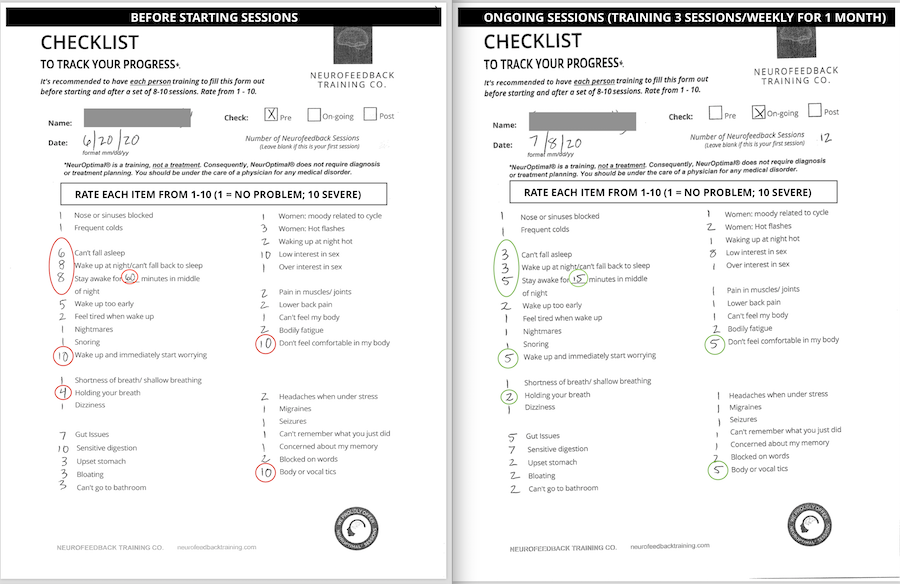
3. What’s included in the home unit rental? Do I need to purchase EEG paste or anything separate?
All our home neurofeedback packages include all materials required to train (including paste), as well an exclusive printer manual with a step-by-step guide, and regular check-ins with a neurofeedback coach trainer via text, email, phone, or Skype. The only thing you supply is headphones or earbuds. We have learned that everyone would prefer to use their own headphones, which are needed for doing the training at home. All headphones/earbuds are compatible with the NeurOptimal® system.
4. How difficult is it to learn how to use a home neurofeedback kit?
Learning how to use the equipment will take you approximately 10-15 minutes, and we provide a printed manual with the equipment. There are only 3 items you need to get familiar with: the tablet, the amplifier (called zAmp), and the 5 sensors. There are only 3 buttons that you need to press on the computer. You can learn how to place the EEG sensors on your head from a 3-minute video. You may get some EEG paste in your hair the first time, but it is water-soluble and comes out easily!
5. How much does the home equipment cost to rent?
We offer three monthly plans--an Individual, a Family and an Unlimited Plan. Cost per session can be as low as $60/session or less. Extend as long as you wish and upgrade and downgrade the plan as you go along. See our pricing here. We ship anywhere in US and Canada. (For international inquiries, we recommend buying a system due to cost of shipment).
6. How long does it take to get the home system rental?
Depending on availability, the time between requesting a reservation to rental arrival is approximately 1-2 business days. If in Canada, shipment takes 3-4 business days.
Minimum time to rent the neurofeedback equipment is one month. After the first month's rental, you can choose to extend for another month or two weeks. If located in Canada, Hawaii or Alaska we ask for 2 month minimum commitment due to cost of shipment.
7. How many neurofeedback sessions do I need?
The best neurofeedback results occur when clients train consistently for 2 - 4 months, training 2-3 times per week or more. If you rent for 2 months, that would look like 3 sessions per week, for a total of 35-40 sessions. Read our case study on the best uses of the neurofeedback home system.
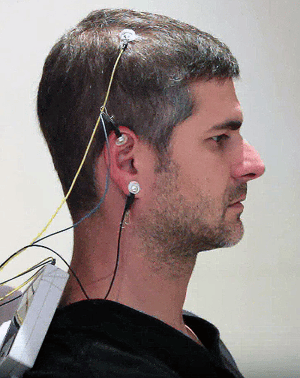 8. Is it hard to learn how to use a neurofeedback home kit?
8. Is it hard to learn how to use a neurofeedback home kit?
In a word, no. The spots on your head where the sensors go, called C3 and C4, are actually large areas approximately halfway between the top tip of the ear and the crown of the head. Anywhere in that area is considered a good location!
Trivia: did you know that the EEG sensors on the head pick up 95% of the electrical information on the entire head, and only 5% of that information is site specific? In other words, don't worry, you have it in the right place!
Watch this video demonstration on how to add the 5 EEG sensors to your ears and scalp.
9. How many Neurofeedback sessions should I do per week?
We usually recommend 2-5 sessions per week per trainee, though you can train every day as this is non-invasive brain training. The minimum we recommend is once a week because throughout the training the brain is learning a new way of decision-making and, like learning a new language, the more frequently the brain practices, the faster it learns.
10. If I do 30 sessions in 30 days will that have the same effect as 30 sessions over 3 months?
No. While your brain will learn a lot about itself, if you train every day for a month it will not provide the same value as spreading those training over 2 or 4 months. The advantage of spreading training over time is that it gives your behaviour and thought patterns time to adapt. For example, when the brain learns it doesn't need to stay in a stress zone of fight/flight pattern, it is going gradually calms down. Here is a client review after two months of renting and training 3 times per week: "Extremely effective managing my daily stressors. Overall my stress has taken a back seat."
11. Why Do We Recommend That Parent Also Train If They Are Renting A Neurofeedback Machine For their children?
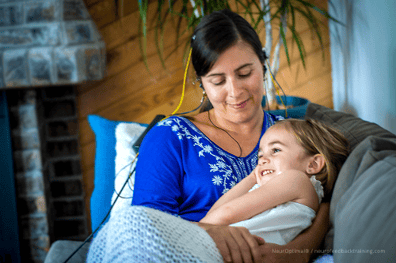 Children respond better to training when an adult train with them. Your childs brain/central nervous system (CNS) is learning to assess current needs by gathering information in the here-and-now, rather than using habitual information/neural pathways. Brain problems such as hypervigilance, difficulties in focusing, overwhelmed feelings, low energy, and emotional dysregulation are the result of maladaptive brain responses that are based on using habitual information and neural pathways.
Children respond better to training when an adult train with them. Your childs brain/central nervous system (CNS) is learning to assess current needs by gathering information in the here-and-now, rather than using habitual information/neural pathways. Brain problems such as hypervigilance, difficulties in focusing, overwhelmed feelings, low energy, and emotional dysregulation are the result of maladaptive brain responses that are based on using habitual information and neural pathways.
The maladaptive brain needs to realize that those responses are not appropriate to the present task. (For example, why should the brain produce a panic, fear, or anger state when there is no threat?) Through training, your child’s brain learns to be in a state called regulation: calm, alert, and open to the here-and-now, and only becomes active when there is an event that requires action.
This process of learning goes faster when a primary caregiver is learning the same process of regulation– and becoming calmer, centered, and open. Why? Because, just like you see in animal behavior, children tune their brains to their caregivers’ brains. If the parent is anxious, the child will also become anxious. If the parent becomes calm the child’s brain will also shift, like tuning forks resonating with each other.
A wonderful example of the process of attunement is The Dog Whisperer on National Geographic. Throughout the episodes, you will see examples of how Cesar (the alpha dog trainer), who is “calm assertive” (i.e. has a regulated CNS), works with an anxious/fearful/aggressive dog through the natural attunement process where a beta dog’s CNS aligns with an alpha CNS.
Natalie Baker has over 25 years of experience as a licensed psychotherapist and has been a NeurOptimal® neurofeedback trainer since 2011. She is the founder of Neurofeedback Training Co., which offers in-person sessions and runs the largest nationwide home rental program for NeurOptimal systems. Natalie also teaches meditation and Buddhist psychology and specializes in working with anxiety, stress, ADHD, and trauma.
Wondering if home neurofeedback is as effective as in-office sessions? Learn more about the benefits and limitations in this blog post.
Not all neurofeedback devices are the same. If you want to do neurofeedback training at home the best is the fully automated system. Learn the...
Discover the safety of neurofeedback and the best systems to use for brain training. Learn how NeurOptimal® and Lens differ & which system is best...
Be the first to know about new blogs